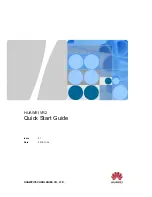
120 - 2
Removal and Replacement (cont’d)
IMPORTANT: The gearbox is heavy. Unless it is safely
supported during removal and replacement it could fall and
cause injury. Make sure that you have access to suitable
jacks and a gearbox locating ‘cradle’ before attempting to
remove the gearbox.
!
WARNING
A raised and badly supported machine can fall on you.
Position the machine on a firm, level surface. Before
raising one end ensure the other end is securely
chocked. Do not rely solely on the machine hydraulics or
jacks to support the machine when working under it.
Disconnect the battery, to prevent the engine being
started while you are beneath the machine.
GEN 1-1
Removal
1
Park the machine on firm level ground. The gearbox is
heavy. If the ground is soft or uneven it will not be
possible to remove the gearbox safely.
2
Loosen the right side rear wheel nuts. Rest the shovel
on the ground and lower the stabilisers to raise the rear
of the machine. Check dimension
X
which must be at
least 800 mm. This will allow the gearbox to be pulled
clear. Block/support the machine.
Note:
On sideshift machines, suitable lengths of steel
channel can be used as safety struts between the stabiliser
feet and chassis, one at each stabiliser.
3
Remove the right hand side rear wheel.
4
Remove the bonnet - see Section 3,
Routine
Maintenance
.
5
Remove the rear axle propshaft - see
Propshafts
.
6
Disconnect the front axle driveshaft bolts
B
(use tool
892/00822).
7
Drain the hydraulic tank and remove the main hydraulic
pump (see Section E,
Service Procedures and Main
Hydraulic Pump
). Tie the suction hose up clear of the
gearbox.
8
Drain the gearbox oil, see Section 3,
Routine
Maintenance
.
9
Remove the access bung/plate at the bottom of the
torque converter housing. Through the access hole,
loosen and remove the torque converter to engine
flywheel retaining bolts
D
.
10
At a later stage the gearbox and engine assembly is
tilted to allow access to fixing bolts. To prevent damage
as the engine is tilted components must have their
fixings removed as follows:
a
Fuel sediment bowl assembly
E
(2 bolts).
b
Exhaust stack fixing bracket
F
(2 bolts).
d
Radiator fan cowl
G
(4 bolts).
It is not necessary to remove these components, only
release them from their fixings.
11
Support the gearbox using a suitable trolley jack and
cradle. The gearbox must be securely located on the
cradle as shown at
Y
.
12
Make sure that the weight of the gearbox is supported
by the trolley jack and then remove the gearbox
mounting bolts
H
.
13
Using the trolley jack, lower the gearbox and engine to
gain access to the top torque converter housing to
engine block retaining bolts
J
. Put a support under the
engine as shown at
Z
to prevent it from dropping when
the gearbox is removed.
14
Undo the four bolts
J
at the top of the torque converter
housing. Note that the two outer most bolts have nuts
instead of screwing into the engine block. Also note the
position of the electrical earth straps.
15
Pull off the breather tube
K
. Undo the gearbox dipstick
fixing nut
L
and then remove the dipstick tube.
16
Label and then uncouple the solenoid control valve
electrical connectors
M
, oil pressure sender
N
and
temperature sender
P
(if fitted). Uncouple the electrical
connector at the speed sensor
S
.
17
Disconnect the gearbox oil cooler hoses
R
.
18
Remove the flywheel housing to engine bolts
T.
19
Manoeuvre the gearbox with the torque convertor clear
of the engine housing.
20
Lower the trolley jack and pull the gearbox and torque
convertor clear of the machine.
Section F
9803/3280
Section F
120 - 2
Issue 1
Powershift Gearbox
















































